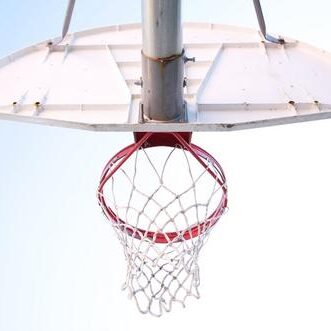Over 26 million Americans like to play basketball, which makes it the most popular sport in the country. Whether you play in a professional league or just for fun with a few like-minded friends, the popularity of the sport is evident in the many private and public courts scattered among our communities. In fact, a court rests in the top floor of the Supreme Court building.
A well-maintained basketball court is important, as its condition aids in a smooth game with fewer injuries. Essential to a quality basketball court is the type of surface you install. Whether you are about to build a brand-new court or want to remodel an older court, an asphalt surface is the best choice. Here are four reasons to use asphalt for your basketball court.
1. Less Expensive
If expense is part of your surface considerations, asphalt is the best choice and usually costs around $4 per square foot, according to ImproveNet. Concrete can cost up to $15 per square foot. Driveway pavers can run $10 per square foot on the low side, or as high as $55. Professional basketball surfacing made of high-tech materials remains the priciest option and is usually reserved for serious players or those with a huge budget.
Less expensive asphalt is not only easier on your sports budget but also frees up monies for other upgrades. For example, you may be able to splurge on a tempered glass backboard rather than acrylic or wood or invest in fencing and better outdoor lights.
2. Smooth Surfaces
Asphalt provides a smooth, continuous surface superior to many other surface options. Concrete must be joined together with expansion joints and is prone to cracking during freezing and thawing. Cracks and joints in concrete can affect the way a basketball bounces and create an element of unpredictability that ruins a game.
Also, brick pavers generate a complex surface full of tiny irregularities similar to concrete. Varying base material thickness beneath brick pavers can create dead spots, or areas that mimic an underinflated basketball during a ball bounce.
Finally, a smooth asphalt surface provides a consistent play surface where ball movement is more predictable and players are not at risk for trips and falls because of surface cracks or upheaval.
3. Easy Maintenance
Asphalt surfaces are long lasting and easy to maintain, especially in cold climates. Remember those cracks in concrete that affect the way a ball can bounce and trip up players? Sealed asphalt is less prone to cracks during freeze and thaw cycles than concrete or brick.
Asphalt courts are simple to sweep clear of water, ice, and snow to keep them in great condition. In contrast, concrete and brick paved courts require special care during snow removal, as sharp edges chip or ruin seams and joints.
4. Easy Painting
No court is complete without accompanying game lines to indicate base and side lines, midcourt, free-throw lines, and the three-point arc. How do you determine proper game play without the appropriate indicators these important lines provide?
Uneven surfaces make brick pavers difficult to paint. However, differently colored brick pavers are a suitable substitute for painted lines if you’re willing to spend that kind of money. And a bad concrete job beneath your paint can make important lines erode or disappear.
Fortunately, asphalt is easy to paint as long as you use the right paint. A 100% acrylic paint is easy to apply and will stay put on the semi-flexible asphalt surface.
Surface choice rules at any basketball court. Pick asphalt when you want the smoothest, most economical option available. Contact Arrow Black Top & Masonry, Inc., when you’re ready to pave your new court. We can also inspect your current court and repave it with asphalt for a superior game court surface.


